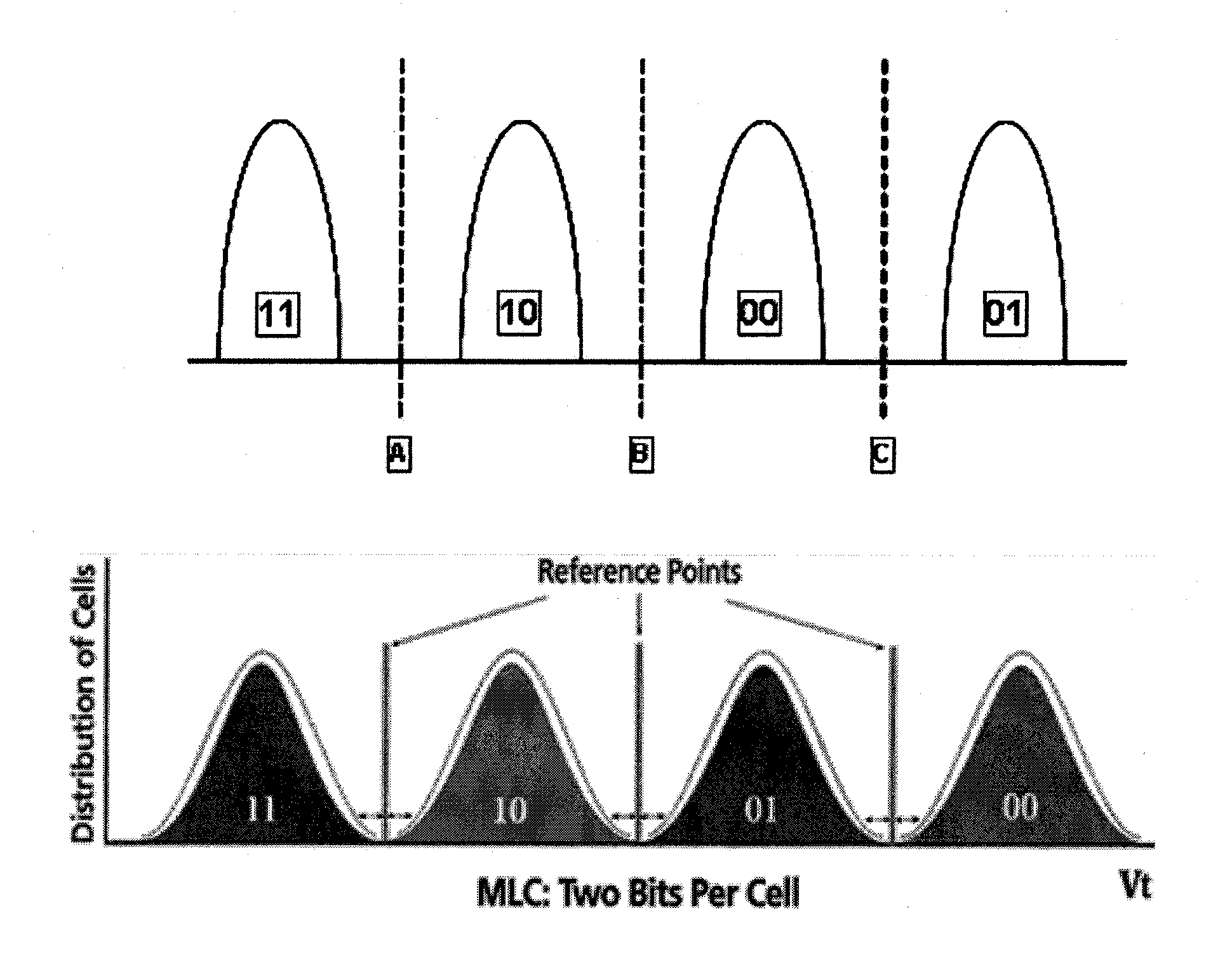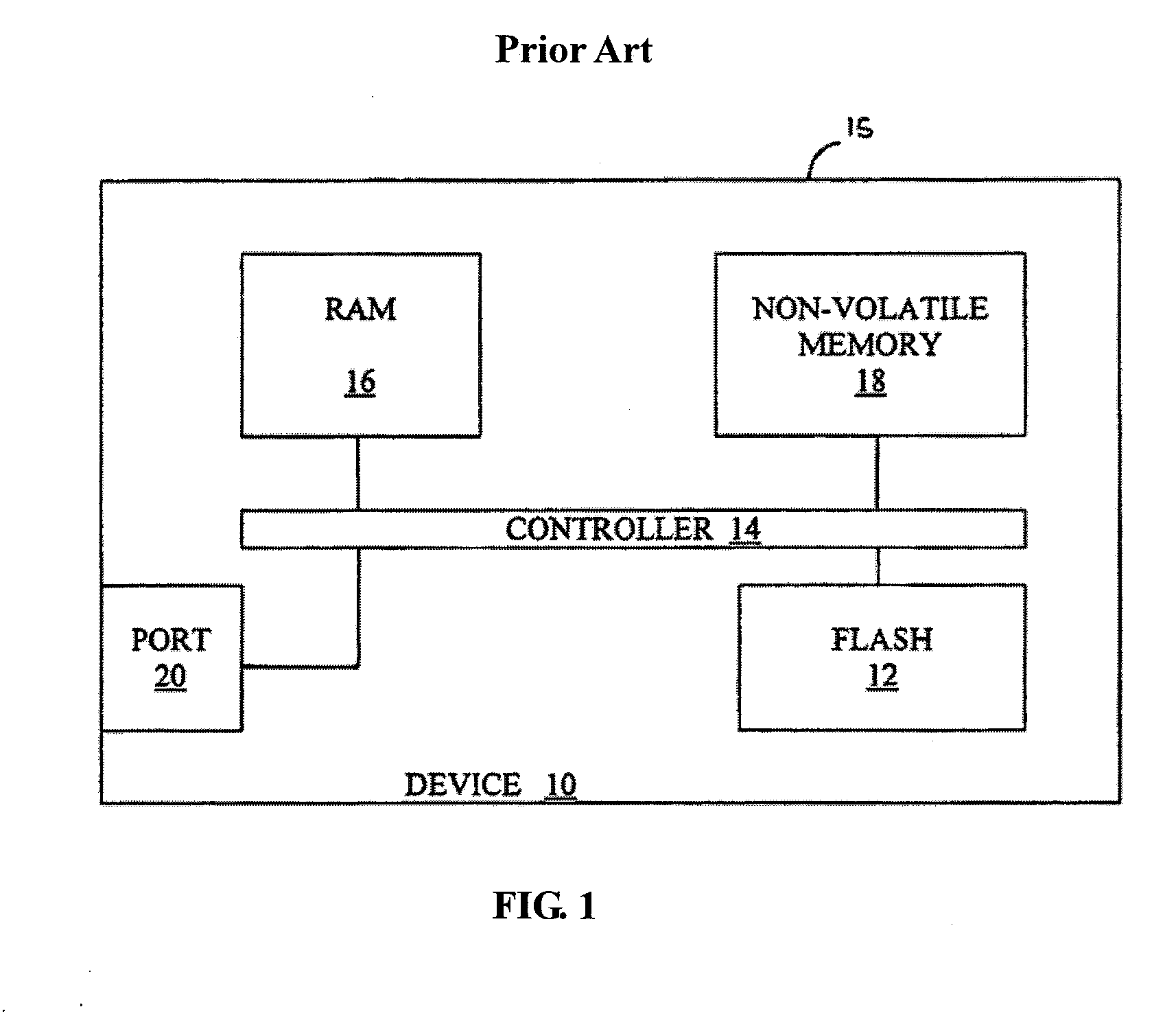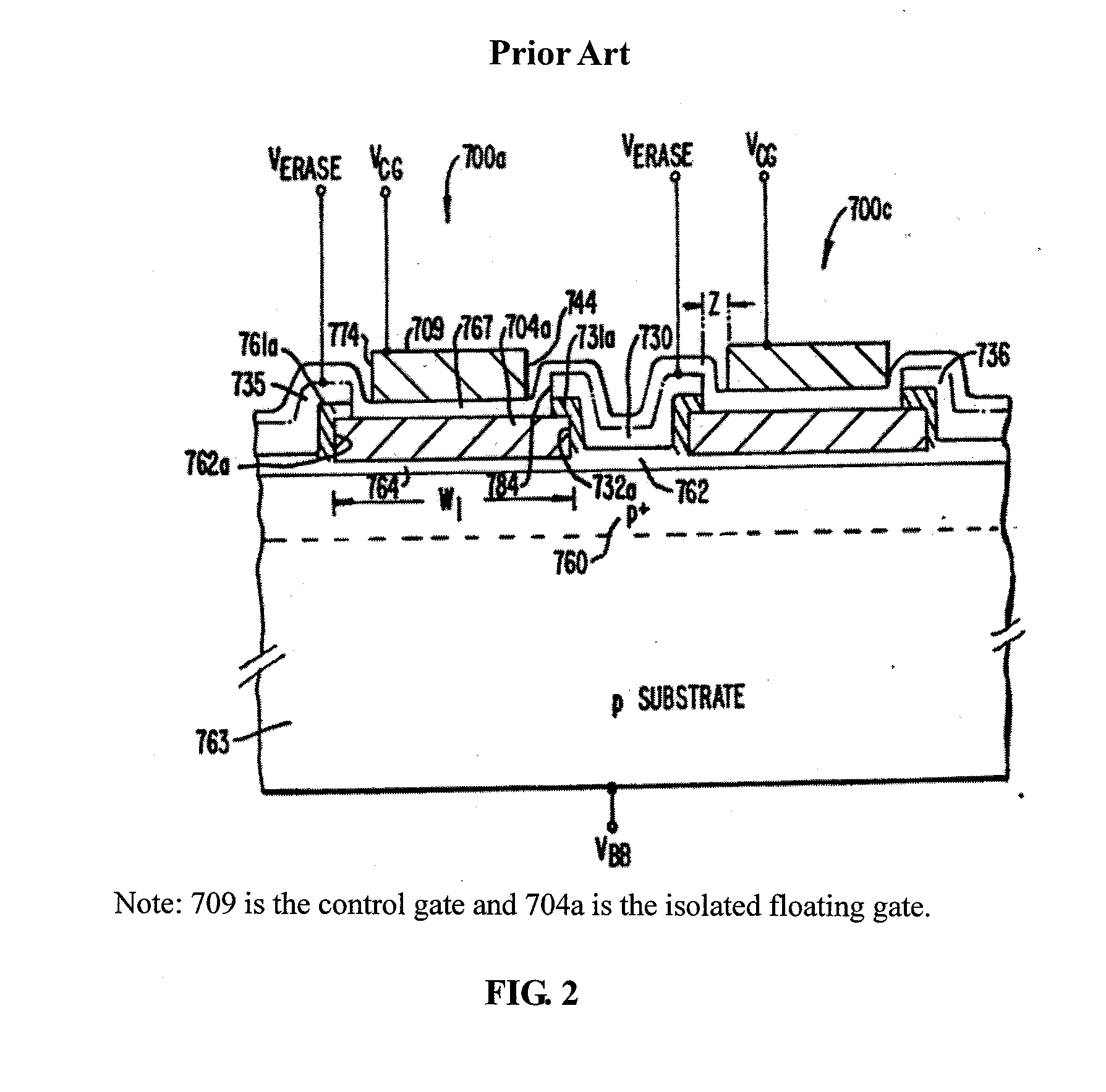Mlc self-raid flash data protection scheme
a self-raid flash and data protection technology, applied in the direction of memory adressing/allocation/relocation, instruments, coding, etc., can solve the problems of long delay between operations, limiting the use of read/write capabilities, and generating unpredictable consequences from power interruptions
- Summary
- Abstract
- Description
- Claims
- Application Information
AI Technical Summary
Benefits of technology
Problems solved by technology
Method used
Image
Examples
Embodiment Construction
[0039]FIG. 1 is a high level schematic block diagram of a conventional NAND flash media device in a non-volatile data storage unit.
[0040]FIG. 2 shows a cross sectional view of a conventional flash memory device.
[0041]An example of a conventional multiple level (MLC) flash memory cell is illustrated in FIG. 3, where a split channel device has two different threshold voltages, Vt1 and Vt2. The referenced cross sectional view and equivalent circuit are taken from U.S. Pat. No. 5,045,940 (Harari).
[0042]Variations of the electronic states generate ranges of threshold voltages in a real MLC system. FIG. 4 depicts the threshold voltage spans in a conventional two-bit MLC device.
[0043]Pages of data sharing the same multiple level cells are called “shared pages”. Each manufacturer may use a different distance between its shared pages. Many memory vendors prefer to set the distance at four. For example, at a pair distance of 4, page 0 is paired with page 4, page 1 is paired with page 5, page ...
PUM
 Login to View More
Login to View More Abstract
Description
Claims
Application Information
 Login to View More
Login to View More - R&D
- Intellectual Property
- Life Sciences
- Materials
- Tech Scout
- Unparalleled Data Quality
- Higher Quality Content
- 60% Fewer Hallucinations
Browse by: Latest US Patents, China's latest patents, Technical Efficacy Thesaurus, Application Domain, Technology Topic, Popular Technical Reports.
© 2025 PatSnap. All rights reserved.Legal|Privacy policy|Modern Slavery Act Transparency Statement|Sitemap|About US| Contact US: help@patsnap.com



